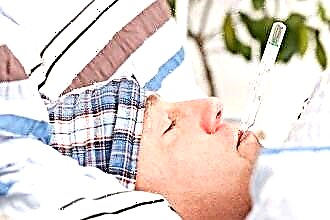Atrophy of the nasal mucosa is a chronic disease in which there is a pathological change and degradation of the tissue lining the nasal cavity. In this case, the shell ceases to normally perform the tasks assigned to it. Atrophy of the nasal mucosa is accompanied by the death of nerve endings in the nasal cavity. At the final stages of the disease and in especially severe cases, bone and cartilage tissue is affected.
The result of such processes is the expansion of the nasal passages, as well as an increase in the lumen of the nasal cavity. If you do not seek professional help in a timely manner, serious complications arise in the form of a weakening of the sense of smell (hyposmia) or its complete loss (anosmia).
Key causes and factors
 It should be noted that the description of this disease is found all the time in ancient sources. This means that people have suffered from atrophy of the nasopharyngeal mucosa since time immemorial. Unfortunately, scientists have not yet been able to understand the mechanism of the appearance of such a pathology. There are a number of theories that neuroendocrine, neurovegetative and some other failures are related to the onset of the pathological process, which are included in the area of responsibility of the hypothalamic-pituitary division of the central nervous system.
It should be noted that the description of this disease is found all the time in ancient sources. This means that people have suffered from atrophy of the nasopharyngeal mucosa since time immemorial. Unfortunately, scientists have not yet been able to understand the mechanism of the appearance of such a pathology. There are a number of theories that neuroendocrine, neurovegetative and some other failures are related to the onset of the pathological process, which are included in the area of responsibility of the hypothalamic-pituitary division of the central nervous system.
It is possible to cure mucosal atrophy, but before that it is advisable to establish the exact cause that led to the appearance of such a disease. According to doctors, the following factors can contribute to the development of such pathological changes:
- Hereditary predisposition (genetic factor) is one of the key causes of mucosal atrophy. In other words, this disease can be transmitted at the genetic level. And not just directly, but bypassing even several generations. In some cases, a similar ailment is diagnosed in distant relatives.
- Often, the pathological process is activated at the time of puberty, when the hormonal background is not highly stable. Usually, atrophy occurs in young girls.
- Quite often, atrophy is provoked by protracted rhinitis (inflammation of the mucous membrane), as well as recurrent rhinitis. They are caused by viral factors or autoimmune viral diseases.
- A common factor due to which an atrophic process occurs is hormonal disorders in the body.
- In rare cases, the pathological mechanism triggers a lack of minerals and vitamins (for example, vitamin, iron, and so on).
- Belonging to the Caucasian and Mongoloid races. It has been scientifically proven that atrophic processes in the mucous membrane are most often diagnosed in people belonging to the above races.
- Radiation therapy can be the cause of the pathology.
- Another risk factor is surgery to remove the concha.
- Diabetes mellitus can also cause this disease.
- Smoking and substance abuse are conducive to the appearance of such an ailment.
Excessive use of medicinal drops for vasoconstriction also negatively affects the condition of the nasal mucosa.
Symptoms
 What are the symptoms of atrophy? The manifestations of the disease are as follows:
What are the symptoms of atrophy? The manifestations of the disease are as follows:
- Dry mouth, which does not go away, but worsens after quenching the thirst.
- The work of the nasopharynx is disrupted, therefore, in some cases, the patient may find that it has become harder for him to breathe.
- Due to the degradation of the tissues lining the nasopharynx, an unpleasant odor appears.
- The nasal cavity is covered with pustules. In the future, they dry out and become covered with a crust. It is rather difficult to remove them on your own; professional help and a special cleaning solution are indispensable here.
- The destruction of the nasal concha is accompanied by the expansion of the airways.
- Microbes attack cartilage and bone tissue. Therefore, the bones of the nose are noticeably reduced in size.
- With severely neglected forms of atrophy, others are connected to the general symptoms, which are characteristic of diseases of nearby organs (larynx, pharynx, and so on).
Treatment
However, such a terrible at first glance ailment can be easily cured. However, only under the condition of the correct choice of therapy, which can only be done by a qualified specialist. Today, such a disease is treated mainly by two methods - surgical and conservative.
 Conservative treatment involves the use of physiological and isotonic medical solutions (Lugol's solution, silver nitrate, and so on). With their help, the mucous membrane is lubricated and dried purulent growths are removed. After that, special softening and healing ointments are applied. Often, the rehabilitation course is supplemented by taking antibiotics (their type is determined individually for each patient) and physiotherapy procedures:
Conservative treatment involves the use of physiological and isotonic medical solutions (Lugol's solution, silver nitrate, and so on). With their help, the mucous membrane is lubricated and dried purulent growths are removed. After that, special softening and healing ointments are applied. Often, the rehabilitation course is supplemented by taking antibiotics (their type is determined individually for each patient) and physiotherapy procedures:
- irradiation with ultraviolet light;
- laser therapy;
- electrophoresis (impact on tissues with weak currents) and others.
In the absence of positive results of conservative treatment, the possibilities of modern surgery are used. The main task of the operation is to artificially reduce the size of the nasal passages. For this, two main methods are used - the installation of implants and the movement of the nasal walls. To determine which option, doctors take into account the symptoms, the individual characteristics of the patient and previous therapy (if such, of course, took place).
In the course of treatment, you should not try to remove dried pustular formations on your own. This is dangerous - it can cause serious complications. This procedure is performed exclusively by the attending physician using solutions based on menthol oil.
Diagnostics and prevention
To get rid of atrophy, it is necessary to timely localize the focus of the disease - the place where bacteria accumulate. They contribute to the destruction of cartilage and bone tissue. The first stage of diagnosis is a consultation with an otolaryngologist (ENT). He examines the patient and develops the optimal rehabilitation course based on analyzes.
 In order to prevent the appearance of such an ailment, we recommend that you constantly pay attention to the condition of the mucous membrane and carry out its hygiene. This is the main condition for a healthy nasopharynx. Rinse the nose daily, then lubricate the mucous membrane with special ointments for recovery and healing. If you have a cold, do not overuse drops to constrict blood vessels. This is one of the most powerful factors that triggers the degradation of nasal tissues.
In order to prevent the appearance of such an ailment, we recommend that you constantly pay attention to the condition of the mucous membrane and carry out its hygiene. This is the main condition for a healthy nasopharynx. Rinse the nose daily, then lubricate the mucous membrane with special ointments for recovery and healing. If you have a cold, do not overuse drops to constrict blood vessels. This is one of the most powerful factors that triggers the degradation of nasal tissues.
At the first signs of atrophic processes, immediately consult a doctor. The sooner treatment begins, the less painful and more successful it will be. Walk regularly in the fresh air, do breathing exercises and physical exercises, eat right - all this will help make the body stronger and more enduring. Thus, you eliminate the risks of nasopharyngeal pathologies.



